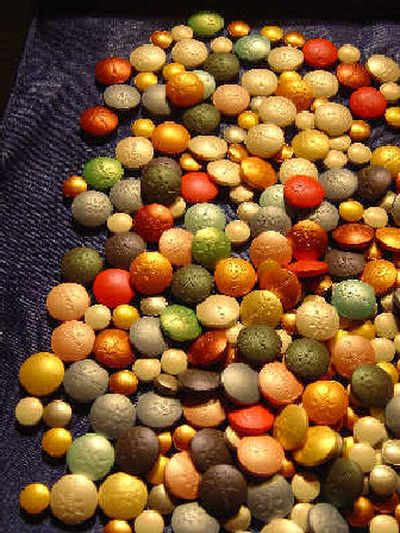Will a splash of satin help the medicine go down?

WASHINGTON — If you think beauty can’t go more than skin deep, swallow this: Health officials on Thursday said drug companies could start gussying up their pills with pigments like those that give cosmetics a pearly sheen.
The pearlescent pigments can be used in any drugs that are swallowed, including pills, tablets and liquids, the Food and Drug Administration said. As a result, drugs may never look the same again.
The pigments can produce sparkly metallic, satiny and shimmery finishes, as well as different hues of red and gold, depending partly on the color of the underlying drug.
The FDA’s publication of a final rule approving their use came eight years after EMD Chemicals Inc., of Gibbstown, N.J., first petitioned the agency. The chemical and pigment maker is part of the German drug company Merck KGaA. That company is entirely separate from U.S.-based Merck & Co. Inc.
EMD Chemicals hopes the pharmaceutical companies it supplies will seize on the technology to give their drugs a look that is unique and hard to copy, said Dan Giambattisto, sales and marketing director for Candurin Pigments at EMD Chemicals.
The pigments are made by coating the mineral mica with either titanium dioxide or iron oxide — or both. The FDA approved using the two separate combinations to color contact lenses in 2002.
Similar pigments also are used in makeup, including lipstick, eye shadow and nail polish, as well as in inks and automotive paint.
Titanium dioxide already can be used in drugs. The new rule allows mica to be used to color drugs meant to be swallowed and increases the amount of synthetic iron dioxide allowed in those medicines. The pigments cannot make up more than 3 percent of the weight of a drug, the FDA said.
In the rule, first published on July 22, 2005, the agency said it “concludes that there is no toxic potential when ingested at levels estimated by the agency.” The FDA delayed making the rule final until Thursday, after it answered the objections of critics.